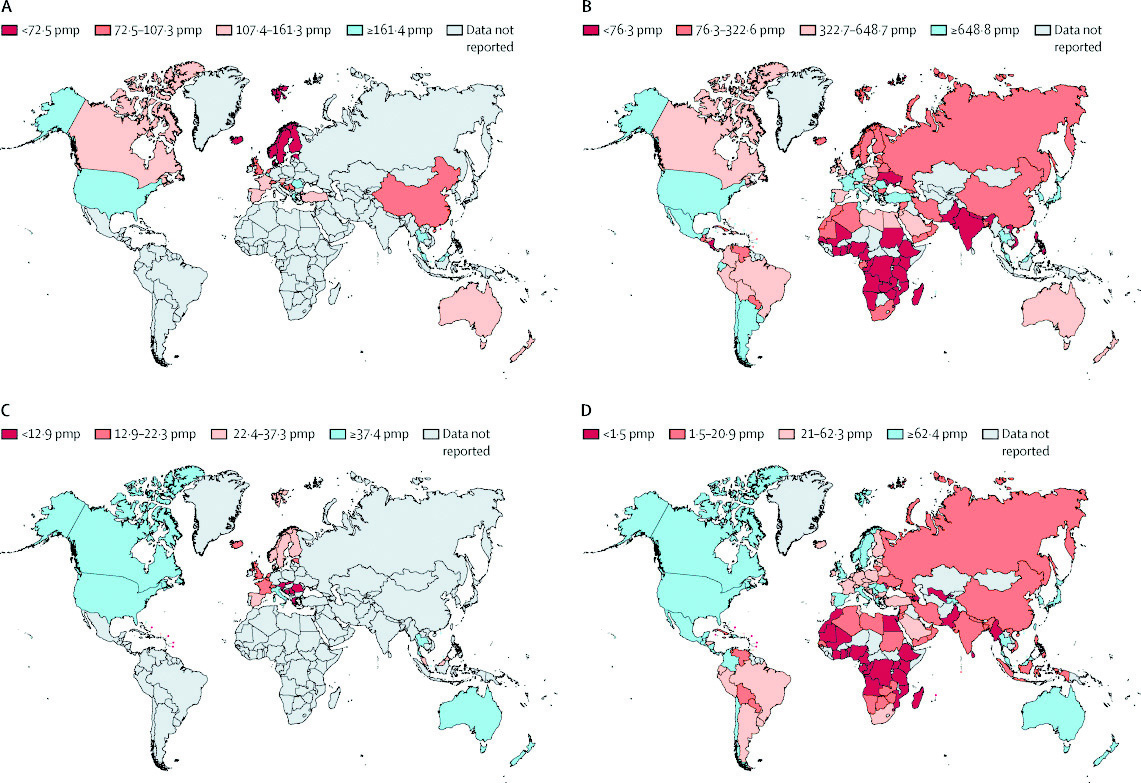Since 2015, the International Society of Nephrology (ISN) Global Kidney Health Atlas (ISN-GKHA) has been leading international efforts to assess the capabilities of countries in delivering optimal kidney care, with a particular focus on low-resource settings.
In the latest iteration, the ISN-GKHA aimed to build on prior insights by examining the availability, accessibility, quality, and affordability of medicines, kidney replacement therapy (KRT), and conservative kidney management (CKM).
With over 850 million people worldwide living with kidney disease, the public health impact is particularly severe in low-income countries (LICs) and lower-middle-income countries (LMICs). The ISN-GKHA initiative evaluates the global status and individual country readiness and capacity to deliver kidney care.
Previous iterations highlighted significant variability in kidney care, prompting this latest assessment after a 4-year hiatus due to the global COVID-19 pandemic. Unlike previous iterations focusing on people with kidney failure, this iteration considers all stages of chronic kidney disease, offering a comprehensive view of care availability and quality across countries.
Prevalence of chronic kidney disease shows global median of 9.5%
In a comprehensive study conducted across 218 countries, the prevalence of chronic kidney disease (CKD) was investigated, revealing a global median of 9.5% with significant regional variations.
Eastern and Central Europe reported the highest prevalence at 12.8%, while Africa had the lowest at 4.2%. The study assessed Disability-Adjusted Life Years (DALYs), indicating a substantial burden of 491.4 per 100,000 population.
Incidence and prevalence of treated kidney failure were explored, showing a median incidence of 146 cases per million population (pmp) annually, ranging from 19 pmp in Ecuador to 529 pmp in Taiwan.
The prevalence of treated kidney failure was over 200 times higher in High-Income Countries (HICs) compared to Low-Income Countries (LICs).
Health spending data revealed that median total health spending per capita was US$353, with increasing values in government and out-of-pocket spending correlating with income levels. The annual cost of in-center haemodialysis ranged from $1646 in Burkina Faso to $103,443 in Costa Rica, showcasing significant disparities.
Health workforce information exhibited substantial variability, with overall densities per 1000 population for nurses, medical doctors, and specialist physicians. Survey responses from 87% of countries indicated a diverse array of nephrologist perspectives, emphasizing the global reach of the study.
Regarding Kidney Replacement Therapy (KRT) delivery, the study noted significant variability, with home haemodialysis services predominant in HICs. Peritoneal dialysis centres were available in 81% of countries, and the median density of kidney transplantation centres varied widely.
Dialysis accessibility for people with kidney failure showed a discrepancy, with 98% access in HICs compared to 32% in LICs. Conservative kidney management (CKM) availability was influenced by income levels, with shared decision-making more prevalent in HICs.
The study also assessed infrastructure, revealing that 45% of countries had support structures, while 37% facilitated shared decision-making. Infrastructure for service delivery at home, care homes, or hospices was available in 24% of countries.
In terms of health system financing, public funding for chronic haemodialysis was available in 45% of countries, varying across income levels. Notably, 46% of countries provided public funding for people with chronic kidney disease not yet receiving KRT.
This comprehensive study offers valuable insights into global kidney health, emphasizing the need for policy changes to address disparities and enhance equitable access to kidney care.
The research was funded by the International Society of Nephrology, contributing to a better understanding of the global burden of kidney disease and its treatment.
In conclusion, the latest iteration of the International Society of Nephrology (ISN) Global Kidney Health Atlas (ISN-GKHA) provides a comprehensive and revealing overview of the global landscape of kidney care. With over 850 million people affected by kidney disease worldwide, the study highlights the substantial burden, particularly in low-income and lower-middle-income countries.
The study’s insights into the prevalence of chronic kidney disease, the incidence and prevalence of treated kidney failure, and health spending patterns reveal a stark contrast between high-income and low-income countries. The observed discrepancies in access to dialysis and transplantation, especially for children, highlight critical gaps in kidney care that need immediate attention.
The research not only sheds light on the current state of kidney health worldwide but also serves as a call to action. The findings emphasize the necessity of tailored strategies to address the specific challenges faced by different regions and income levels.
The substantial variation in the prevalence of nephrologists and the recognition of chronic kidney disease as a health priority further underscore the need for enhanced awareness and capacity building.
Ultimately, this study contributes significantly to the understanding of the global burden of kidney disease and its treatment. The call for policy changes to bridge the existing gaps and promote equitable access to kidney care is resounding.
By fostering international collaboration and prioritizing kidney health, policymakers, healthcare professionals, and organizations can work together to create a more equitable and effective global approach to kidney care.























